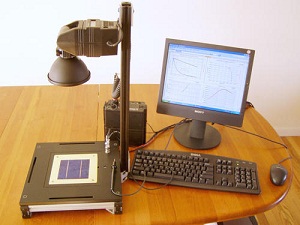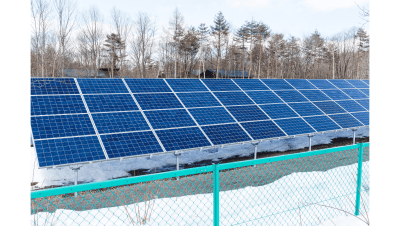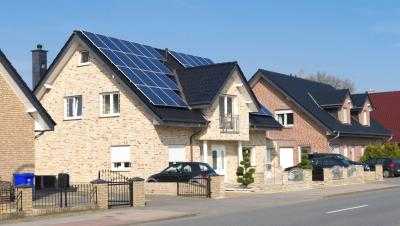How heat affects photovoltaics
 There’s a complex relationship at work between photovoltaics (PV), heat and sunlight. Solar power works best when the sun’s shining (of course). But when the sun’s shining, everything gets hotter.
There’s a complex relationship at work between photovoltaics (PV), heat and sunlight. Solar power works best when the sun’s shining (of course). But when the sun’s shining, everything gets hotter.
PV semiconductors offer more resistance in extreme heat, making them less efficient when the modules should be most efficient. Thankfully, this additional resistance is small, at most, reducing efficiency by about 10 percent. But newer technologies—like thin-film PVs, which don’t rely on crystalline silicon to produce electricity—are less susceptible to heat-related efficiency losses.
So despite PV panels being best suited for regions like the southwestern United States, which receive upwards of 6.0 kilowatt hours of sun per square meter daily, PV panels actually function better at colder temperatures, particularly crystalline silicon-based cells, which are the most commonly used. Their thin-film counterparts suffer smaller efficiency losses due to high temperatures. In an arid region like the southwest, most of today’s PV cells aren’t operating at their peak efficiency during the hottest days of the year.
The semiconducting materials used in PVs, particularly in crystalline silicon PV cells, lose efficiency as temperatures increase. The Physics Hypertextbook explained that as temperature in a conducting material increases, quasiparticles, called phonons, are excited and move throughout the material, impeding the uniform movement of electrons. This impedance is what reduces efficiency in PVs when it gets too hot.
Newer technologies like thin-film PV use different semiconductor materials like Copper indium gallium selenide (CIGS), which don’t lose as much efficiency in the heat. In fact, a study by Loughborough University, “Mapping the Performance of PV Modules of Different Types” found that CIGS produced between 0.5 percent to 2.5 percent more power over a year period, “with the largest differences found in hotter climates.” Another form of thin-film PV, using Cadmium Telluride as the semiconducting element to produce electricity, performed better than crystalline or CIGS PV cells did in high temperatures. The study said that “The performance of CdTe is consistently higher than the two other technologies, by a margin of 5-12 percent over c-Si, depending on location.”
However, some new nanophotovoltaics actually capture infrared (heat) radiation from the sun and would feasibly, when they make it to market, operate at higher efficiencies in the heat. Until then, we’re stuck with thin-film PV and silicon PV modules that operate at lower efficiency in higher temperatures.



